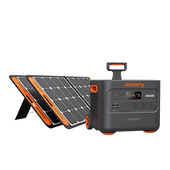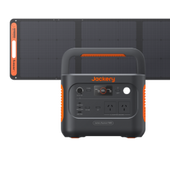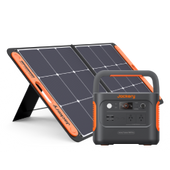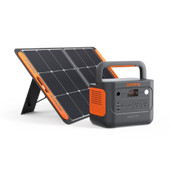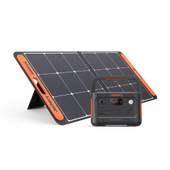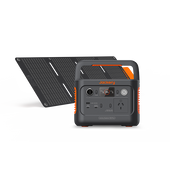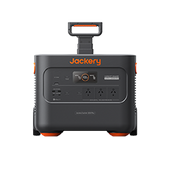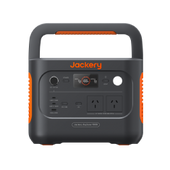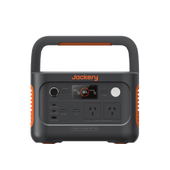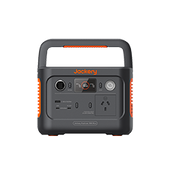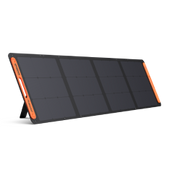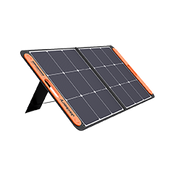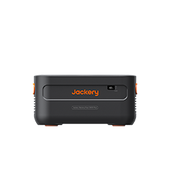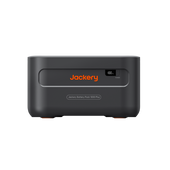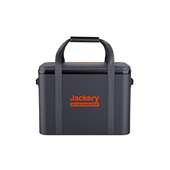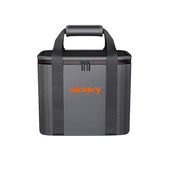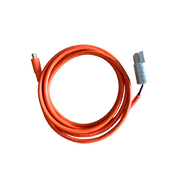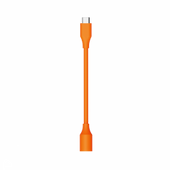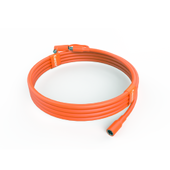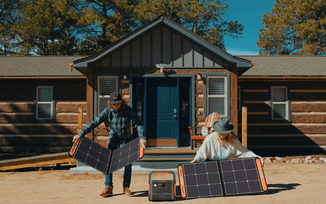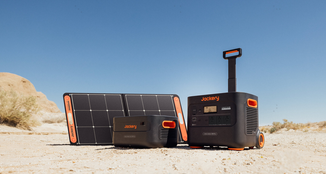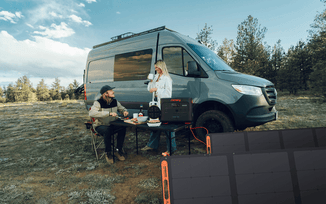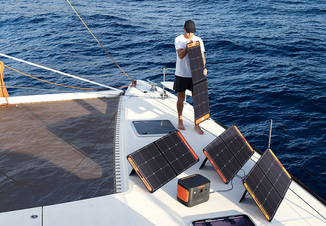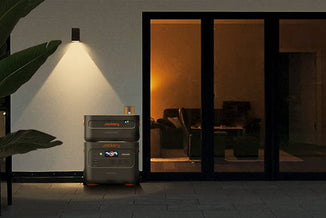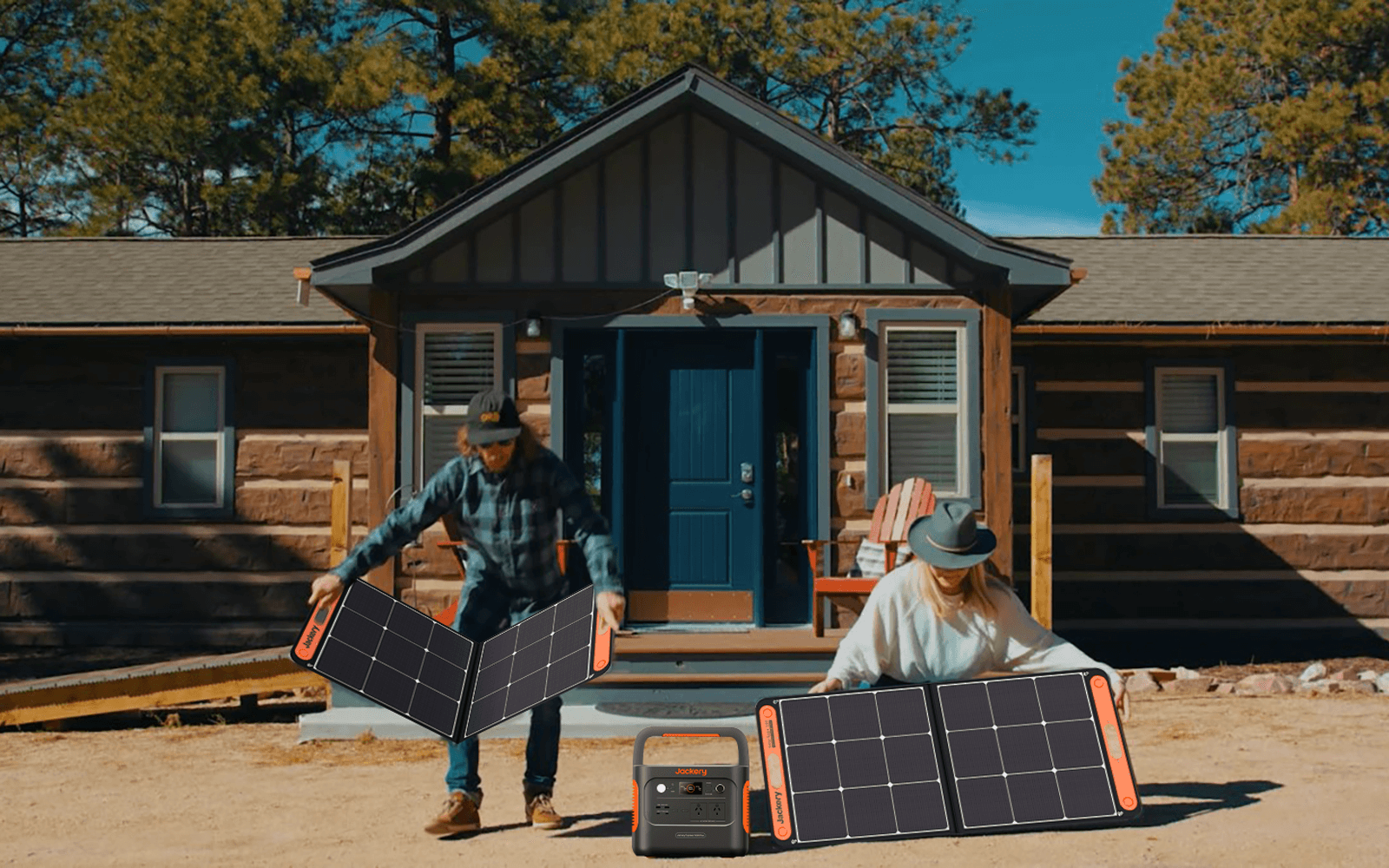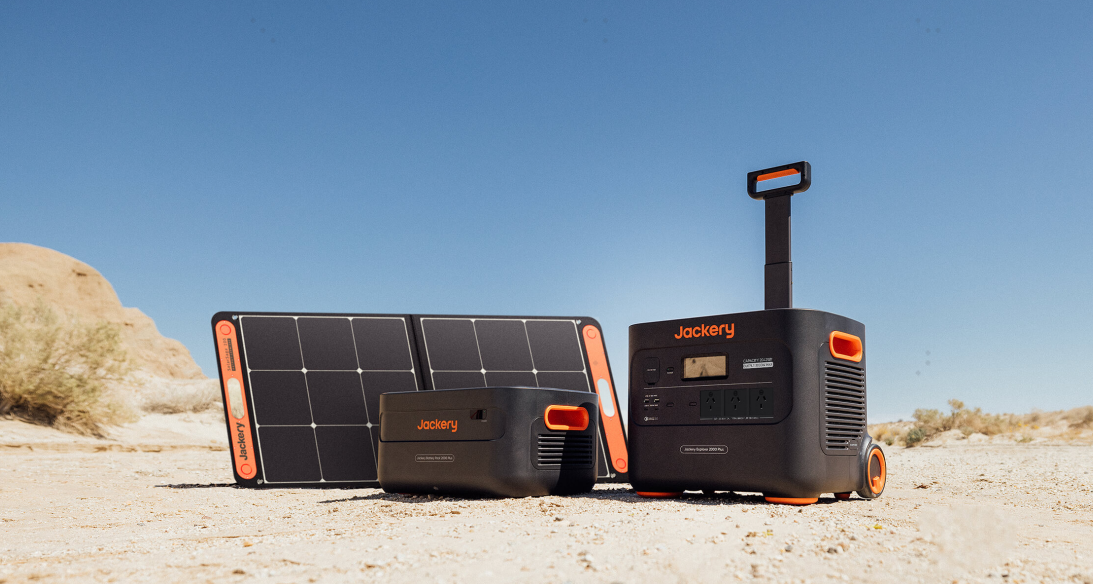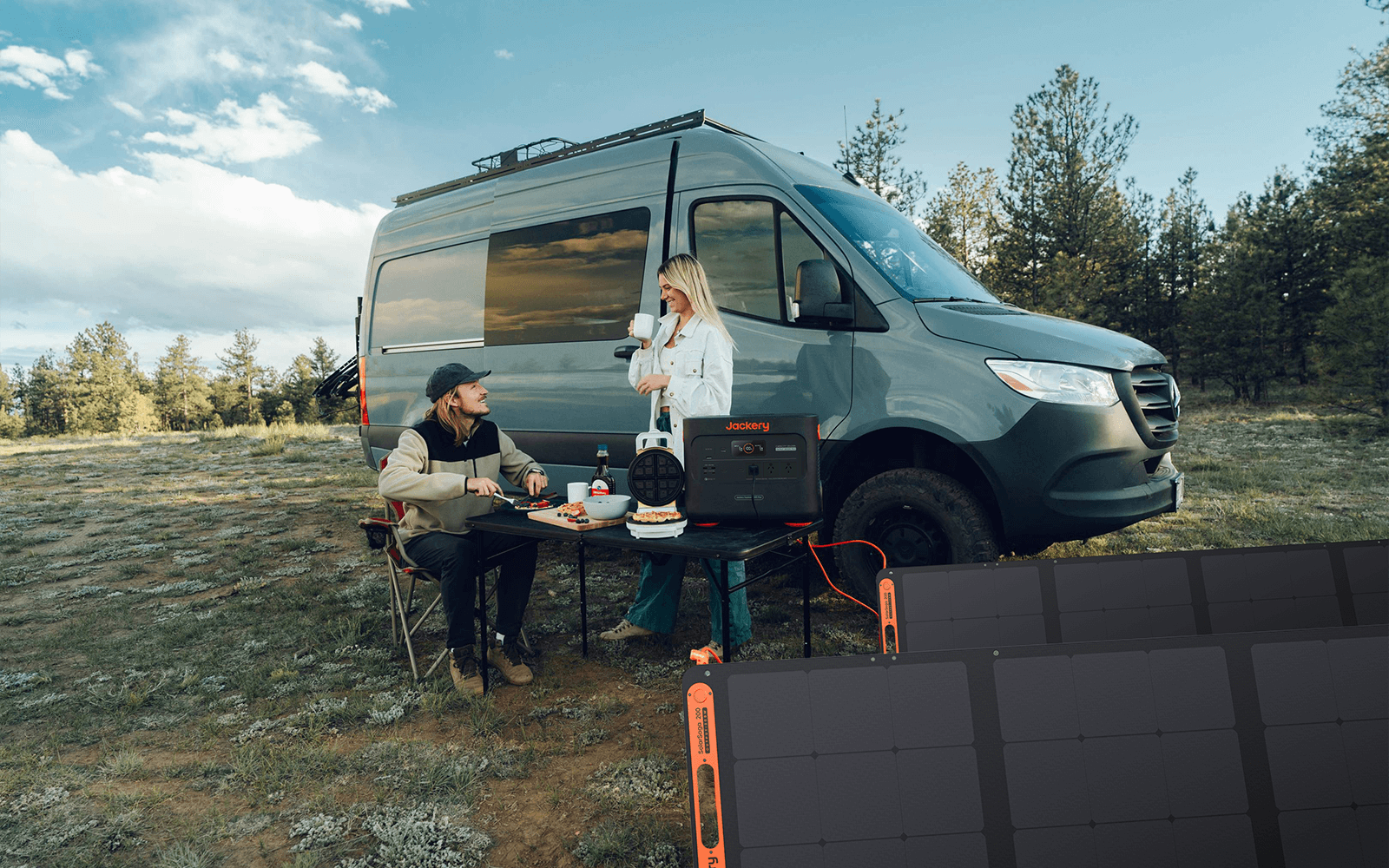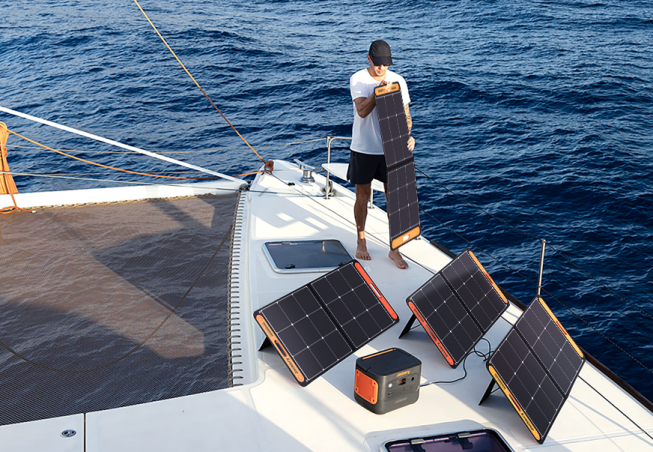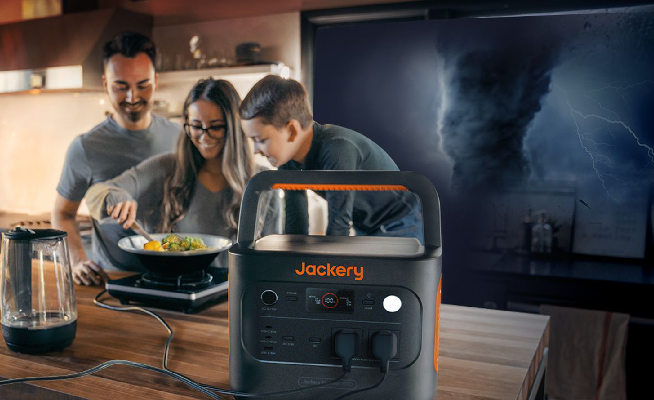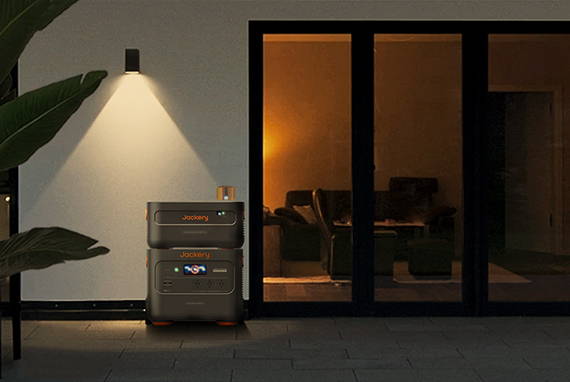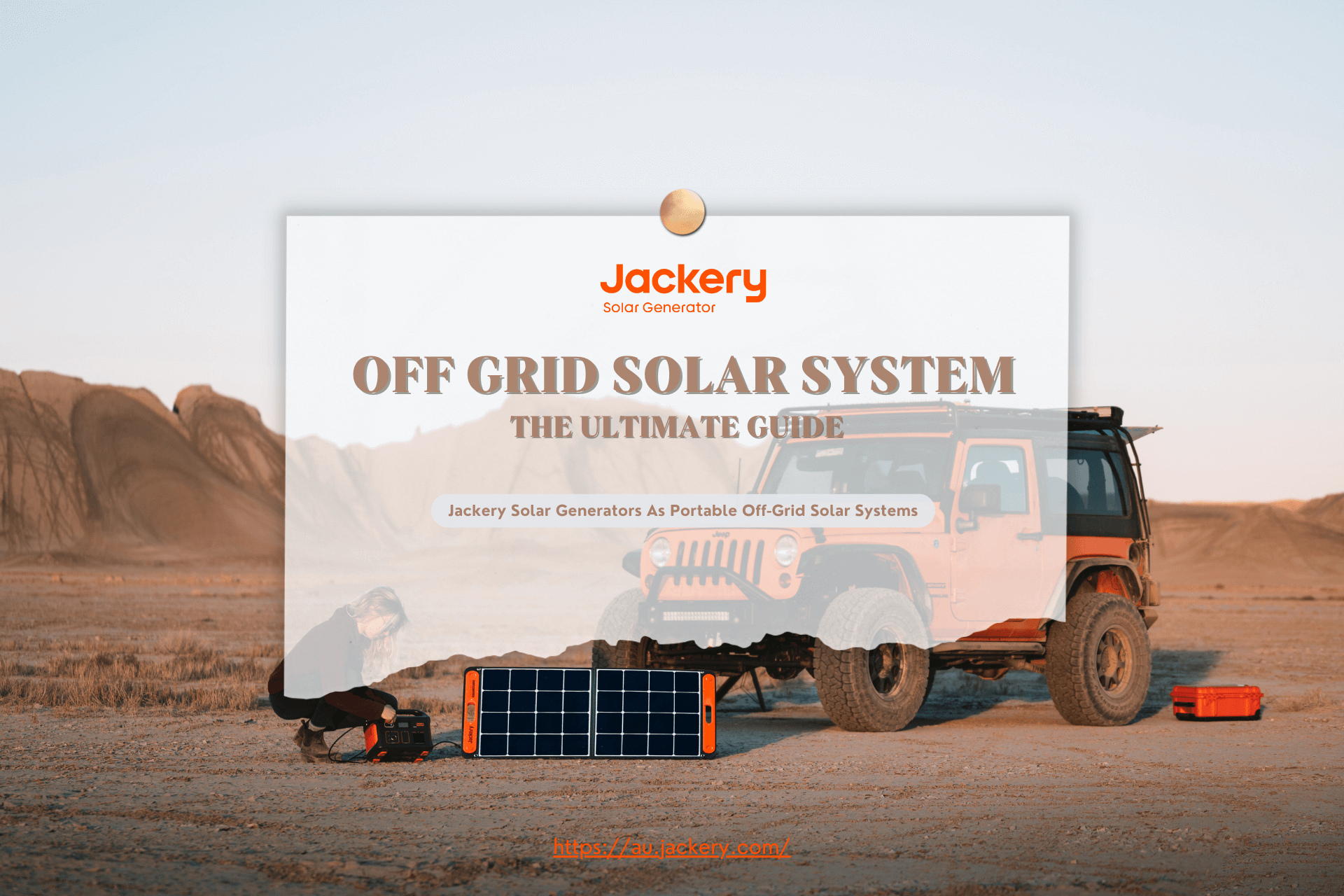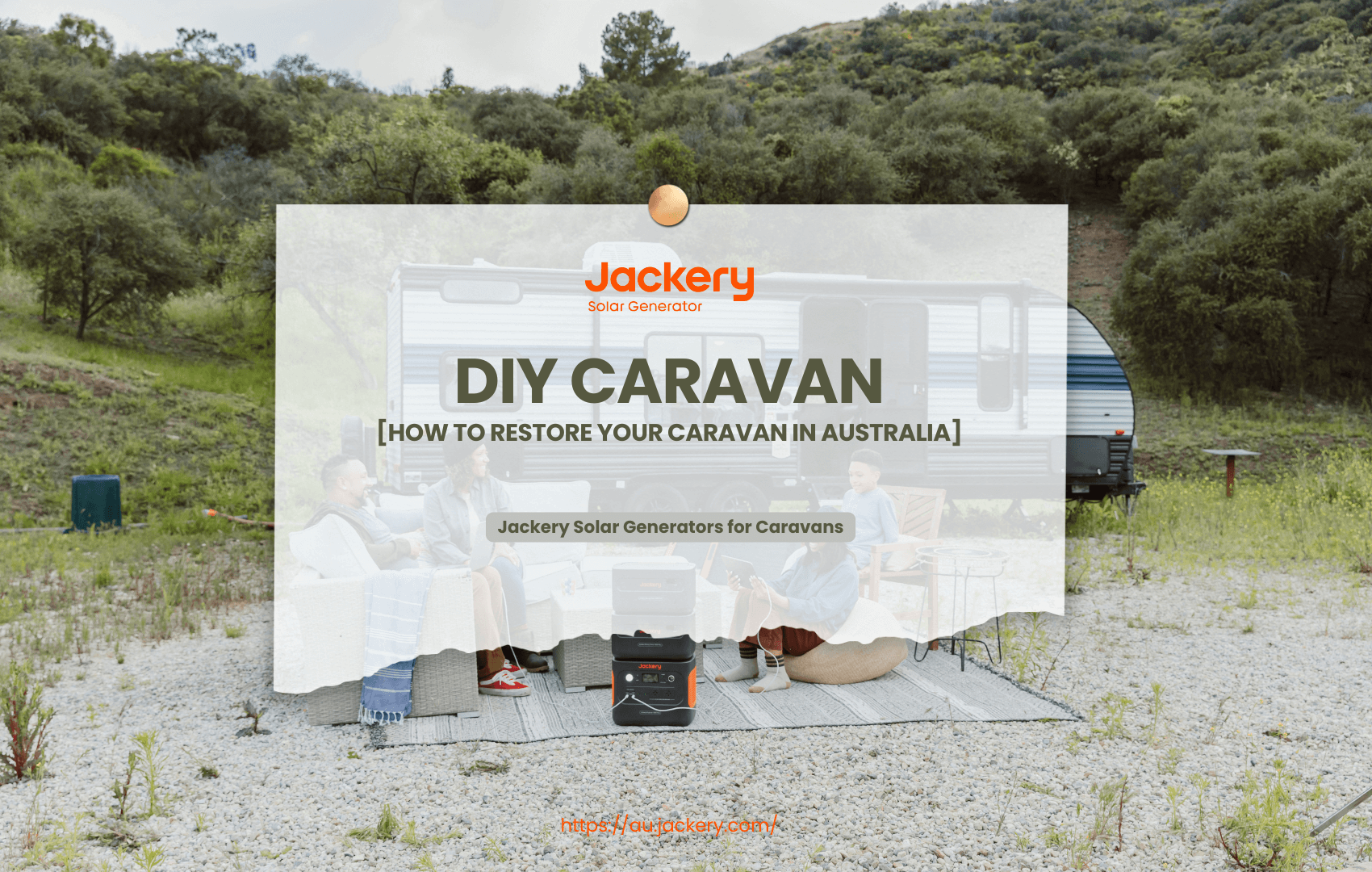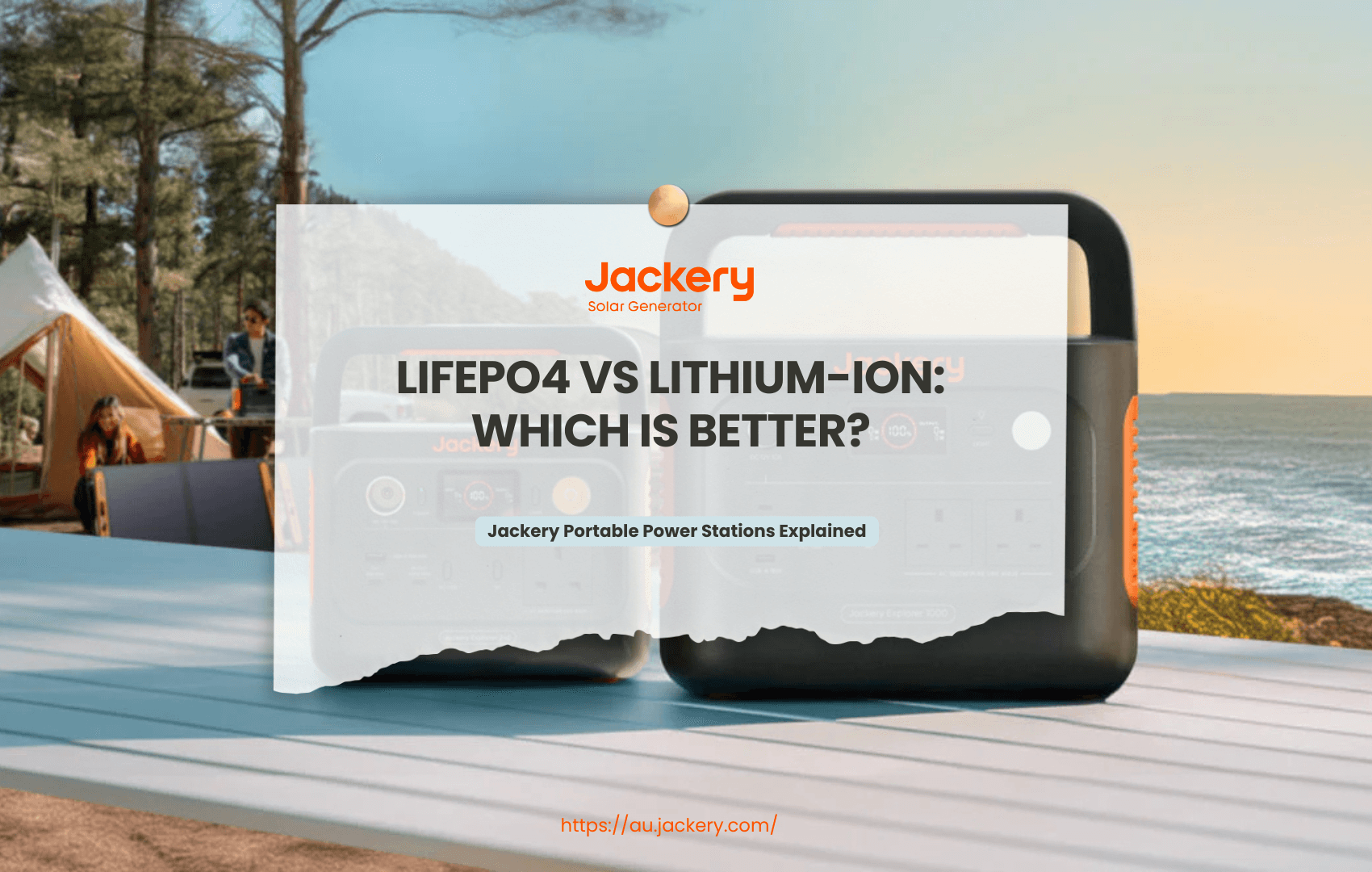|
Key Takeaways: |
|
- An increasing number of individuals are turning to solar energy for their homes and businesses. - The off-grid solar system functions autonomously, eliminating the requirement for a grid connection. If you build an on-grid solar system, you will always have access to energy (until the grid fails), regardless of whether your solar system produces or has batteries. - You will not receive an electric bill if your PV system is not connected to the grid. Even if your solar system produces 100% of your electricity, an on-grid system may incur minor electricity bill charges. - While the cost of an on-grid system for a typical home might range from $4,000 to $10,500 for a 6kW to 10kW system, an off-grid system designed for similar energy needs could range from $25,000 to $70,000 or even higher. - We recommend the Jackery Solar Generator 2000 Plus and 1000 Plus as portable solar systems for your home. |
What Are Off-Grid and On-Grid Solar Systems?
Solar power is gaining popularity as a clean and renewable source of electricity. An increasing number of individuals are turning to solar energy for their homes and businesses to reduce their carbon footprint and save money on electricity. There are two fundamental sorts of solar power systems: on-grid and off-grid.
What Is an Off-Grid Solar System?
The off-grid solar system functions autonomously, eliminating the requirement for a grid connection. Nonetheless, this system's proper operation necessitates including a battery backup to store solar energy generated during daytime hours. The system's generated power is used to power the home and appliances, with any remaining power saved in batteries for later use in the evening or on a rainy day.
During the day, the solar panels tirelessly harvest solar energy, while the storage battery collects excess energy to allow electrical appliances to operate at night. Understanding these underlying differences helps us understand why each system best suits various scenarios.
What Is an On-Grid Solar System?
The on-grid solar system, also known as a grid-tied system, can generate surplus electricity, serving not just home demands but also commercial and industrial sectors. On-grid solar systems are Australia's most popular and frequently used for homes and businesses. This system is unique because it does not require an energy storage battery. Instead, the grid acts as an energy reservoir, making it more cost-effective and easier to maintain.
Off-Grid vs. On-Grid Solar Systems
Depending on the type of solar power system utilised, excess solar energy can be released back into the public electricity grid, resulting in credits on your energy account and lower electricity prices.
In this section, we'll look at the distinctions between two of the main types of solar power systems that are being employed throughout Australia:
On-grid solar is called a 'grid-feed' or 'grid-tie' solar system.
Off-grid solar is sometimes called a stand-alone power system' (SAPS).

The ability to store and use extra power the system produces distinguishes the two solar systems.
Off-Grid vs. On-Grid Solar Systems: Your Access to Electricity
Electricity Access with Off-Grid Solar
What is meant by "off-grid solar systems"? An off-grid solar system relies solely on the sun and energy stored in batteries to power your home or company. If you choose a solar system that is not connected to the electric grid and does not have a generator, you will only have power at two points:
Your solar system produces power while the sun is shining.
When you use energy that your solar system
has already produced to power a solar storage device, like batteries.
If you don't have batteries or another way to store your energy, you'll have less or no electricity when it's cloudy and none at night. With an off-grid system, you will not have access to more electricity if you require it. Everything you produce and store is sufficient to power your equipment.
Electricity Access with On-Grid Solar
If you build an on-grid solar system, you will always have access to energy (until the grid fails), regardless of whether your solar system produces or has batteries.
If your system isn't producing enough electricity to run the devices, lights, and equipment you're using, you can supplement it with energy from the utility grid. This guarantees you always have enough electricity to meet your needs.
Off-Grid vs. On-Grid Solar Systems: What Happens to Excess Production
Excess Production from Off-Grid Solar
Depending on the system size you install, how much electricity you use, and when you use it, your system will generate more electricity than you consume. What happens with the surplus energy is determined by the equipment you install.
Most off-grid solar systems are designed to generate "extra" electricity during the day, which is then stored in batteries. The energy stored in the batteries can then be used when the system is not producing, such as at night or in overcast weather.
Systems can be built to produce enough excess electricity during the day to cover your entire energy use, 24/7, depending on your energy goals. However, even with the most significant and precise forecasts, the weather is unpredictable. Your system might not be able to produce enough electricity to charge the batteries and meet your demands if the weather is consistently cloudy for several days.
Extra batteries are expensive even though they offer comfort and a bank of stored electricity in case of an emergency. Purchasing more batteries than you require could be unaffordable, depending on your budget.
Excess Production from On-Grid Solar
Many people who want to install an on-grid solar system wish to cover 100% or nearly 100% of their energy consumption, just as they do with off-grid solar systems. This is also achievable with on-grid systems.
Your solar system may generate excess energy Depending on the time of day you use electricity. Instead of sending it to batteries, as in an off-grid system, you can send it to the grid and get rewarded for the power.
The majority of people will be compensated by net metering. Nett metering is the process by which your utility provider credits or reimburses you for the electricity that your solar system produces and sends to the grid. Then, if you need to draw energy from the grid, you'll use those credits to receive your electricity without incurring additional penalties on your electricity bill.
Grid-connected solar electricity has a significant advantage over off-grid installations since nett metering and other utility compensation mechanisms provide free storage.
Off-Grid vs. On-Grid Solar Systems: How You Get Billed for Electricity
Electricity Bills for an Off-Grid System
You will not receive an electric bill if your PV system is not connected to the grid. However, off-grid solutions are sometimes more expensive because they require additional equipment, like batteries, to function, even if there is no electricity bill.
Electricity Bills for an On-Grid System
Even if your solar system produces 100% of your electricity, an on-grid system may incur minor electricity bill charges. You may continue to notice service fees or shipping charges. This is the fee charged to customers for connecting their home or company to the grid. For many utilities, this price is a fixed amount that is unaffected by how much electricity you use.
Demand charges are another common sort of charge. Demand charges are often placed on business properties and are the higher electric rates you pay for power consumed during a peak demand period. The peak demand time is usually the 15 minutes when your firm consumes the most electricity.
The utility will charge a higher rate for the electricity used at that time since using a large amount of electricity at once strains the grid. Because the energy generated by your system will partially offset the energy you receive from the grid, you can limit your peak demand period if it falls during the day. Think about using solar and batteries to reduce peak demand if you pay high demand charges.
Depending on how much energy your home or company uses and how much energy your solar system generates, you may be charged for electricity that was taken from the grid and used that was not covered by your nett metering credit.
How Do Off-Grid and On-Grid Solar Systems Work?
On-grid and off-grid solar systems both harness sunlight using photovoltaic panels to generate direct current (DC) electricity, which is then converted to alternating current (AC) by an inverter to power homes and appliances. However, their fundamental difference lies in their connection to the utility grid.
On-grid systems are connected to the grid, allowing excess energy to be exported and providing a backup power source when solar generation is insufficient. Off-grid systems, conversely, operate independently, relying on batteries to store energy for use when sunlight is unavailable, offering energy autonomy but requiring a significant investment in battery storage and potential backup generators.
How Does an Off-Grid Solar System Work?
Off-grid solar systems generate electricity from solar panels and charge a battery using a charge controller. This is how it works. Solar energy generation begins with solar panels, which absorb sunlight and convert it into direct current (DC) electricity. These panels are often positioned in areas with the best sunlight exposure to maximise energy production throughout the day.

DC to AC Conversion: Similar to on-grid systems, solar-generated DC electricity needs to be converted to alternating current (AC) before it can be utilised in residences or commercial buildings. This conversion is done by an inverter, which makes sure the electricity works with standard electrical systems and equipment.
Powering the Property: The generated AC electricity is used to power the property's appliances, lighting, and heating systems. This self-sufficient configuration lowers dependency on external energy sources while providing steady electricity if the system is properly constructed and maintained.
Excess Energy Storage: When the solar system generates more electricity than the property can use, the excess energy is stored in batteries. These batteries serve as a reservoir, storing energy during low sunshine or at night. Battery sizing and management are crucial for ensuring consistent performance.
Battery Power Usage: When solar energy production is minimal (for example, at night, overcast days, or in the winter months), the stored energy in the batteries meets the property's power needs. This ensures a continuous power source without relying on the grid, giving the system complete independence.
System Maintenance and Backup: To achieve peak performance, off-grid systems must be maintained regularly, which includes monitoring battery health, cleaning solar panels, and assessing inverter efficiency. Some systems may additionally contain backup generators to provide power during prolonged times of low sunlight.
How Does an On-Grid Solar System Work?
An on-grid solar system uses several well-coordinated procedures to harness solar energy to power homes and businesses efficiently. This is how it works.
Solar energy generation begins with solar panels that convert sunlight into direct current (DC) electricity. These solar panels are often positioned on rooftops or open areas to maximise sunlight exposure throughout the day.

DC electricity from solar panels must be transformed into alternating current (AC) before it can be used in residences and commercial buildings. The inverter guarantees that the electricity is grid-compatible and can be used by all standard appliances and electrical systems in the building.
Powering the Property: The generated AC electricity is used to power the property. This electricity powers appliances, lights, and heating systems, reducing the energy required from the grid.
Excess Energy Management: When the solar system generates more electricity than the property can use, the excess energy is not wasted. Instead, it's fed back into the public grid. This approach benefits the environment by lowering reliance on fossil fuels and allowing households to earn credits via net metering.
Gird Power Usage: When solar energy production is minimal, such as at night or on cloudy days, the property can take electricity from the grid to meet its energy needs. This seamless integration provides a continuous power supply while maximising the benefits of solar energy.
Off-grid systems run independently, using battery storage and backup generators, whereas on-grid systems rely on the utility grid for backup.
How Much Do Off-Grid and On-Grid Solar Systems Cost?
Off-grid solar systems in Australia generally incur a higher upfront cost compared to on-grid systems due to the necessity of a substantial battery storage system to ensure power availability when solar generation is low or absent.
While the cost of an on-grid system for a typical home might range from $4,000 to $10,500 for a 6kW to 10kW system, an off-grid system designed for similar energy needs, could range from $25,000 to $70,000 or even higher, largely depending on the battery capacity required for energy independence.
Although off-grid systems eliminate electricity bills, the significant investment in batteries and their periodic replacement contributes to the overall higher cost compared to grid-tied systems, which can also benefit from feed-in tariffs for excess energy exported to the grid.
How Much Does an Off-Grid Solar System Cost?
Off-grid solar setups typically cost between $50,000 and $65,000 on average. This is more than $30,000 more expensive than an on-grid setup. Most of the cost is due to battery storage, which is expected to cost at least $20,000 for the equipment alone. This figure could be greater depending on the appliances you need to run in your home.
A residential property's cost of a complete off-grid solar system, including batteries, varies greatly. A 4kW system starts at roughly $10,000, but a more powerful 16kW system can cost up to $30,000. The price includes the installation process and all the components required to power your home. These components include solar panels, solar inverters, solar batteries, supporting structures, and other fully functional solar system accessories.
Here are the total costs for off-grid solar installations.
|
System Size |
Number of Solar Panels |
Average Cost per Watt |
Average Total Cost |
|
4kW |
11 |
$3.25 |
$10,100 |
|
6kW |
16 |
$2.95 |
$13,390 |
|
8kW |
22 |
$2.85 |
$16,960 |
|
10kW |
27 |
$2.75 |
$20,180 |
|
12kW |
32 |
$2.75 |
$24,100 |
|
14kW |
39 |
$2.60 |
$27,936 |
|
16kW |
43 |
$2.60 |
$30,860 |
How Much Does an On-Grid Solar System Cost?
An average-sized on-grid solar panel installation will cost around $20,000 before subsidies. Including the federal solar tax credit reduces the price to approximately $14,000. Grid-connected solar systems are typically the least expensive way to go solar. The cost of a solar system varies based on size and installer.
The following are the anticipated costs for on-grid solar systems:
|
System Size |
Estimated Cost |
Estimated Cost after Tax Credit |
|
4kW |
$12,000 |
$8,400 |
|
6kW |
$18,000 |
$14,000 |
|
8kW |
$24,000 |
$16,800 |
|
10kW |
$30,000 |
$21,000 |
|
12kW |
$36,000 |
$25,200 |
|
14kW |
$42,000 |
$29,400 |
Off-Grid vs. On-Grid Solar: Which One Is Best for You?
Cost concerns are significant when choosing between various systems, but they are not the only ones to consider. So, on-grid or off-grid, which is best for you? Let us begin by discussing the advantages and disadvantages of each.

Advantages of Off-Grid Solar Systems:
Full energy independence from the utility grid.
Suitable for isolated places without grid access.
Ensures reliable power supply amid frequent outages.
Battery storage ensures consistent electricity delivery.
Effective solution for sustainable energy in remote or rugged environments.
Disadvantages of Off-Grid Solar Systems:
High initial investment for batteries and equipment.
Higher cost than on-grid installations.
Requires routine battery maintenance and replacement.
Increased long-term costs and maintenance.
Proper energy management is necessary to avoid power shortages.
No backup from grid electricity.
Advantages of On-Grid Solar Systems:
Cost-effective with low initial investment.
No need for pricey batteries.
Earn credits for excess energy with nett metering.
Significantly reduced electricity bills.
Easily installed and maintained.
Suitable for urban and suburban locations with stable grid access.
Disadvantages of On-Grid Solar Systems:
Reliant on the utility grid for operating.
Auto-shutdown during power interruptions without battery backup.
No electricity during outages, even with solar panels.
Lack of complete energy independence
Rely on the grid for power during low production times (e.g., night or cloudy days).
On-grid solar systems are connected to the utility grid, whereas off-grid systems function independently, without a grid connection. Off-grid setups rely on battery storage to store excess energy generated throughout the day, allowing you to have electricity at night or when the sun is low. In contrast, grid-connected systems rely on the utility grid for backup and storage. This strategy is often more practical and convenient.
The table below highlights a few key differences:
|
Aspect |
Off-Grid Solar |
On-Grid Solar |
|
Connection to Grid |
Operates independently, with no grid connection. Uses stored power when solar generation is not enough. |
Connects to the power grid and sends surplus power back. Draws power from the grid when panels are not producing. |
|
Energy Storage |
Uses batteries to store energy for nighttime or cloudy days, ensuring continuous power. |
Does not rely on batteries, the grid provides energy when sunlight is limited. |
|
Cost |
Typically more costly, due to batteries and additional infrastructure. |
Generally less expensive, no battery costs or related equipment needed. |
|
Maintenance |
Requires more frequent maintenance, to manage and maintain battery systems. |
Less maintenance required, no battery system upkeep. |
|
Assurance of Energy |
Depends on stored energy and weather, insufficient storage or long periods without sunlight cause shortages. |
Relies on a stable grid for service, though outages can occur. |
If you live in an area that is too far away to connect to the local electricity supply or where the power supply is unreliable, an off-grid solar system is the best option. Off-grid systems are less practical for regular homeowners but ideal for remote locations or mountain cabins.
In most other circumstances, an on-grid solar system is recommended due to its cost-effectiveness and reliability. On-grid solar installations offer numerous advantages, including cost savings, environmental benefits, and increased property value. The benefits, such as government subsidies and lower solar technology costs, are tempting. However, there are several disadvantages, such as the initial expense and dependency on sunny weather. These criteria help determine whether switching to solar is the best option.
A basic on-grid system is the most cost-effective solution. These systems offer a significant return on investment due to their simple design and inexpensive initial cost. On-grid solar systems appeal to residential homes because they do not require bulky and expensive battery storage solutions.
You will also need fewer solar panels than you would on an off-grid system because there is no need to produce extra power without sunlight. Typically, a basic on-grid system is the most affordable option. Because of their low initial cost and simple design, these systems provide a significant return on investment.
Contacting local solar firms is the most effective way to identify the solar system that best suits your needs. They will know how to offer the best system for your location and help you get the most out of your solar panels.
Alternatives: Jackery Solar Generators Explained
While both solar generators and off-grid solar systems aim to provide power independently of the main electricity grid, solar generators offer several distinct benefits, particularly in terms of portability and ease of use.
Solar generators, like Jackery Solar Generators, are typically all-in-one units that integrate a battery, inverter, and charge controller, making them easily transportable and requiring minimal setup. This portability allows users to readily move the power source to different locations as needed, a significant advantage for camping, RV travel, or temporary power needs during outages.
In contrast, off-grid solar systems are typically permanently installed and designed to power a fixed location, such as a home or building. They involve a more complex installation process with separate components like solar panels, a larger battery bank, an inverter, and a charge controller that must be wired together.
While off-grid systems can provide substantial and continuous power for a home, their lack of portability and higher installation complexity can be a drawback compared to the plug-and-play nature of solar generators. Furthermore, solar generators often require less maintenance than the larger battery banks in off-grid systems.
Jackery Solar Generator 2000 Plus
With its unmatched performance, safety, and longevity, the Jackery Solar Generator 2000 Plus raises the bar for portable power solutions. It can swiftly charge small to large camping refrigerators because of its extensible 2 to 12 kWh capacity. This solar generator is long-lasting and dependable, built with a LiFePO4 battery with a 10-year lifespan and 4,000 charging cycles.

- Expandable Power for Multiple Uses: The Jackery Solar Generator 2000 Plus accommodates additional battery packs, enhancing its capacity from 2 kWh to an impressive 12 kWh, making it ideal for road trips, outdoor camping, home backup, and heavy-duty use.
- Ultra-Long Standby: The 2000 Plus features an extended standby mode that maintains a 50% charge for up to 2 years. Feel assured that your appliances are connected to our 2000 Plus! With a 20ms EPS, essential devices such as your refrigerator and CPAP remain operational instantaneously during home backup or off-grid living.
- Never Worry about Losing Power: The Solar Generator 2000 Plus requires only 2.5 hours for a complete sun charge when utilising six SolarSaga 200W solar panels. The power source achieves complete autonomy by using solar energy for charging, eliminating reliance on the power grid.
|
Jackery Solar Generator 2000 Plus Working Hours |
|
|
Refrigerator (500W) |
3.3-20.4H |
|
Portable AC (1150W) |
1.9-8.3H |
|
TV (60W) |
23-160H |
|
Coffee Maker (550W) |
2.8-17.5H |
|
Hand Drill (700W) |
3.1-13.7H |
(*The working hours are only for reference; the actual working hours depend on your usage.)
Jackery Solar Generator 1000 Plus
The Jackery Solar Generator 1000 Plus blends cutting-edge technology with remarkable efficiency for smooth power solutions. With 1.26 to 5 kWh expandable capacity, this all-in-one solar generator is adaptable and scalable in capacity. It is designed to fuel your life and power your household appliances, making it perfect for home backup or off-grid living. Additionally, you may manage your power station via the Jackery APP. The following are the reasons for choosing it:

- Portable Powerhouse: The 1000 Plus, with a capacity of 1264 Wh and a 2000W output, boasts the highest output among comparable items, accommodating 99% of devices. Experience the liberty of the outdoors while camping. Utilise the comfort and convenience of a portable power station to maintain the charge of your fridges, phones, kettles, and speakers when outdoors and indoors.
- Multiple Recharging Methods: The MPPT technology ensures that 99% of the solar charging is efficient, and the power station can be fully charged in 9 hours with a SolarSaga 200W solar panel or 4.5 hours with four SolarSaga 100W solar panels. It can charge cars at the wall in 1.7 hours as a bonus. You'll never have to worry about power outages!
- All-Around Safety: The Lithium Iron Phosphate (LiFePO4) battery of the Jackery 1000 Plus has a strong 10-year lifespan and produces a pure sine wave and steady voltage, guaranteeing the security of all your electrical equipment. Equipment damage is prevented by the reliable power supply and cutting-edge ChargeShield technology.
|
Jackery Solar Generator 1000 Plus Working Hours |
|
|
Refrigerator (500W) |
2-8H |
|
Portable AC (1150W) |
0.9-3.5H |
|
TV (60W) |
13.3-66.7H |
|
Coffee Maker (550W) |
1.8-7.3H |
|
Hand Drill (700W) |
1.4-5.7H |
(*The working hours are only for reference; the actual working hours depend on your usage.)
FAQs about Off-Grid vs. On-Grid Solar
The following are the frequently asked questions about the off-grid and on-grid solar systems.
1. Can I Transition From On-Grid To Off-Grid Later?
Most on-grid systems can be modified with battery storage to enable off-grid or hybrid solutions.
2. How Do Off-Grid Systems Handle Bad Weather?
Off-grid systems use battery storage and backup generators to provide power during periods of poor solar production.
3. How Much Do Off-Grid And On-Grid Solar Systems Cost?
The cost of off-grid and on-grid solar systems varies considerably based on several parameters, including the system's size, component quality, and installation difficulty. On average, an off-grid solar system with batteries can cost more than $75,000.
A household on-grid system typically costs between $25,000 and $55,000, with batteries adding $20,000 or more. It is crucial to remember that these are general estimates, and the actual cost may differ depending on particular situations.
4. Does On-Grid Solar Work When the Power Is Out?
In most situations, on-grid solar systems are programmed to turn off automatically when the power fails. This safety precaution prevents electricity from being pumped back into the system, potentially endangering utility workers working to restore service. However, some on-grid systems include battery backup systems that allow them to continue powering the home during an outage.
Final Thoughts
Finally, to grasp the difference between on-grid and off-grid solar systems and select the type of solar energy best for you, we must examine a few factors, such as location, budget, energy reliability, and environmental implications. Aside from personal benefits such as convenience, energy independence, and financial incentives, going solar provides several significant advantages, including a beneficial environmental impact and increased grid reliability. Overall, it's an excellent investment in your future, which will be brighter thanks to solar electricity.

